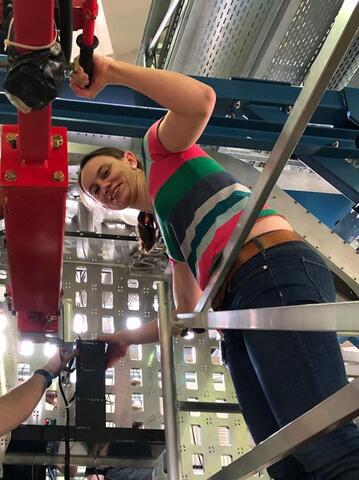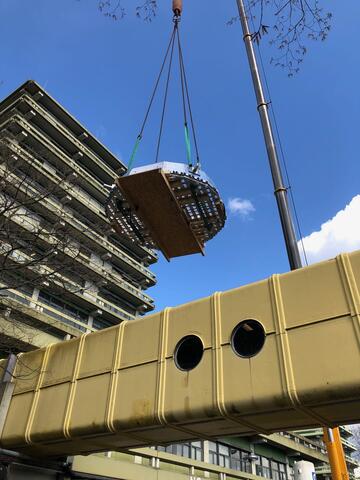Workshop „Physics Opportunities with Proton Beams at SIS100” was held in Wuppertal
PANDA meetings
04/03-08/03 2024 CM 24/1 in Münster
24/06-28/06 2024 CM 24/2 at GSI
25/06-26/06 2024 FEE/DAQ Workshop
04/11-06/11 2024 CM 24/3 at GSI
05/03-07/03 2025 WS at GSI
16/06-20/06 2025 CM 25 in Uppsala
Simulation, Reconstruction, and Design Optimization for the PANDA Barrel DIRC
Maria Patsyuk
TH-PHD-2015-005.pdf
(8.06 MB)
The PANDA experiment at FAIR will study fundamental questions of strong
interaction with high precision. Efficient particle identification for a wide momentum
range and the full solid angle is required for successful reconstruction of the
benchmark channels of the broad PANDA physics program. For this purpose a compact
ring imaging Cherenkov detector is being developed for the barrel region of the
PANDA detector. The concept and the baseline design of the PANDA Barrel DIRC
were inspired by the BABAR DIRC and improved with important modifications,
like fast photon timing, a compact expansion volume, and focusing optics.
The required detector resolution was defined based on the PANDA PID specifications
using the phase space distributions of the final state kaons produced in
selected benchmark channels. To optimize the PANDA Barrel DIRC design in terms
of performance and cost the baseline detector geometry and a number of design options
were implemented in the simulation. The key options include the radiator
dimensions, two types of expansion volume shapes, and a variety of focusing systems.
The performance of the detector designs was quantified in terms of single
photon Cherenkov angle resolution and photon yield. It was found that the number
of radiators can be reduced by about 40% without loss in performance. A compound
spherical lens without air gap was found to be a promising focusing system. An optimized
Barrel DIRC design meeting the PID requirements includes three radiator
bars per flat section, the compound lens without air gap, a compact prism-shaped
EV, and a total of 192 Microchannel-Plate PMTs as photosensors. The number
of electronic channels can be halved without loss in performance by combining two
neighbouring pixels. For such a detector design the total cost will be significantly reduced
compared to the baseline version while still meeting or exceeding the PANDA
PID performance goals.
interaction with high precision. Efficient particle identification for a wide momentum
range and the full solid angle is required for successful reconstruction of the
benchmark channels of the broad PANDA physics program. For this purpose a compact
ring imaging Cherenkov detector is being developed for the barrel region of the
PANDA detector. The concept and the baseline design of the PANDA Barrel DIRC
were inspired by the BABAR DIRC and improved with important modifications,
like fast photon timing, a compact expansion volume, and focusing optics.
The required detector resolution was defined based on the PANDA PID specifications
using the phase space distributions of the final state kaons produced in
selected benchmark channels. To optimize the PANDA Barrel DIRC design in terms
of performance and cost the baseline detector geometry and a number of design options
were implemented in the simulation. The key options include the radiator
dimensions, two types of expansion volume shapes, and a variety of focusing systems.
The performance of the detector designs was quantified in terms of single
photon Cherenkov angle resolution and photon yield. It was found that the number
of radiators can be reduced by about 40% without loss in performance. A compound
spherical lens without air gap was found to be a promising focusing system. An optimized
Barrel DIRC design meeting the PID requirements includes three radiator
bars per flat section, the compound lens without air gap, a compact prism-shaped
EV, and a total of 192 Microchannel-Plate PMTs as photosensors. The number
of electronic channels can be halved without loss in performance by combining two
neighbouring pixels. For such a detector design the total cost will be significantly reduced
compared to the baseline version while still meeting or exceeding the PANDA
PID performance goals.





